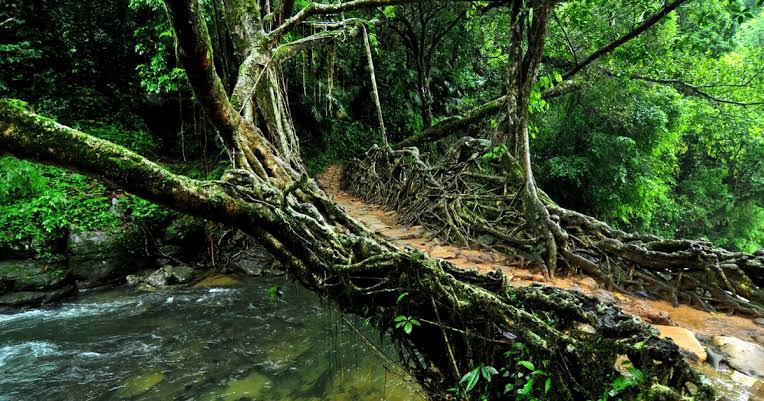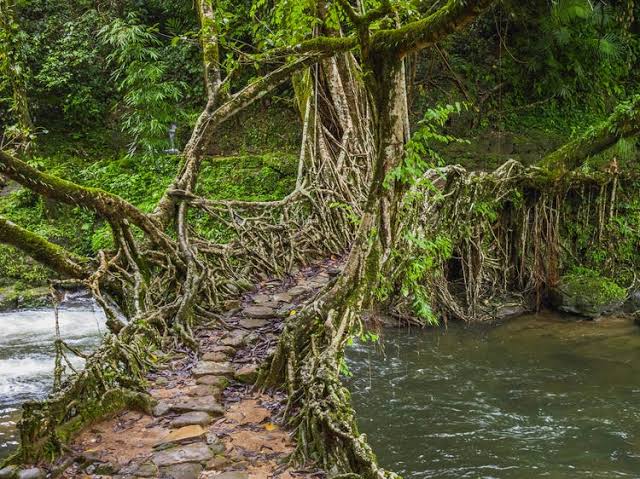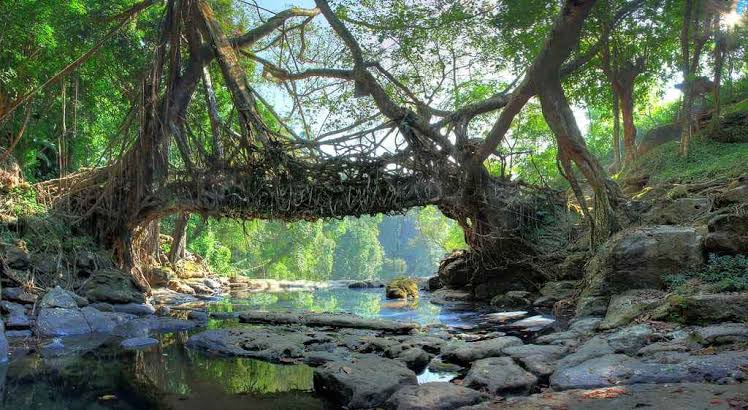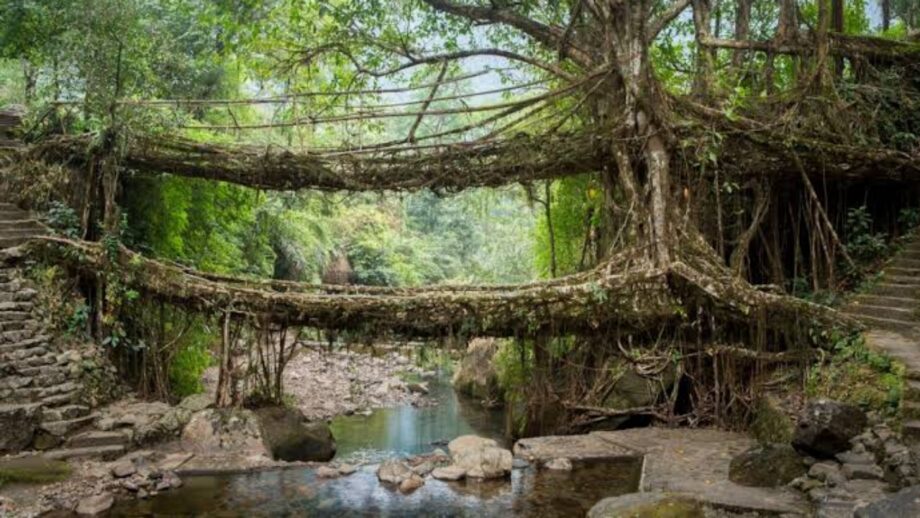There are bridges all throughout the world that are considered to be among humanity’s best works of art! The Living Root Bridges in Meghalaya, on the other hand, are a natural wonder. These magnificent structures have been methodically built over time and are one of Meghalaya’s most popular tourist destinations. The ever-changing Meghalaya bridges are formed up of intertwined thick roots that give the structure formidability and allow it to hold 50 or more people at once.
They are grown by trained Khasi and Jaintia tribes who have mastered the art of producing root bridges across elevated banks of streams running through Meghalaya’s deep forests. The concept of Meghalaya’s living bridges began two centuries ago (180 years) when veterans of the Khasi clan in Meghalaya inserted rubber tree roots into hollow Areca nut palm canes that met halfway across the stream. The roots were properly grown and cared for until they reached the opposite bank, were totally entangled with one another, and proved capable of carrying huge loads.
The following are some noteworthy facts regarding these bridges:
Rubber tree roots, also known as Ficus elastica tree, are used to make the Living Root Bridges.
Some of the root bridges are more than 100 feet long and take ten to fifteen years to perfect.
These roots can live for up to 500 years once completely formed. While some of the roots decay as a result of their constant contact with water, others sprout to compensate for the ones that have decayed, ensuring the bridge’s durability.
The double-decker root bridge in Cherrapunji and the single-decker root bridge in Shillong are the only two living root bridges in the world, and they are major tourist attractions in the Northeast.
UNESCO has designated the Living Root Bridges in Meghalaya as a World Heritage Site.
Keep reading IWMBuzz.com for more such updates on your favorite celebs.





